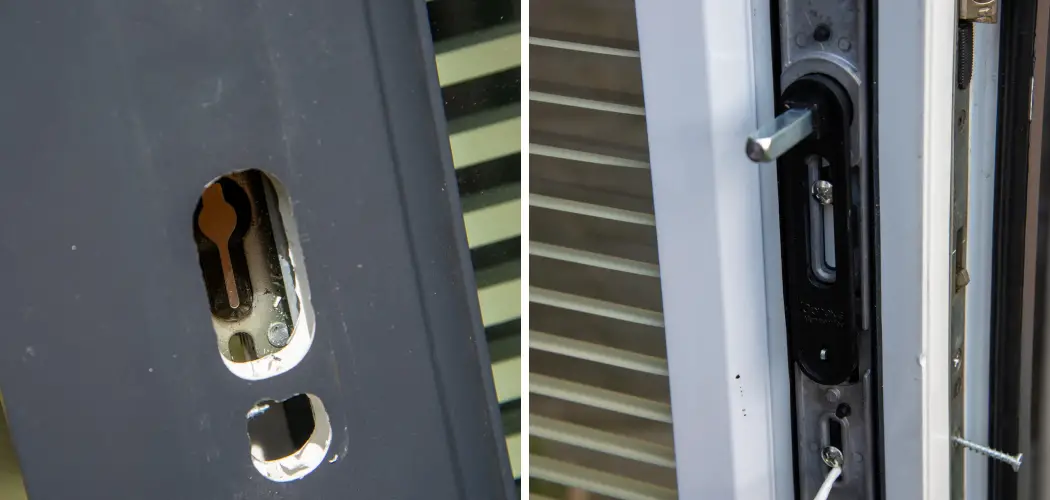Dealing with a stuck deadbolt can be a frustrating and potentially concerning situation, as it compromises the security and accessibility of your home or property. Whether due to age, weathering, or misalignment, a stuck deadbolt requires prompt attention to restore functionality and ensure peace of mind.
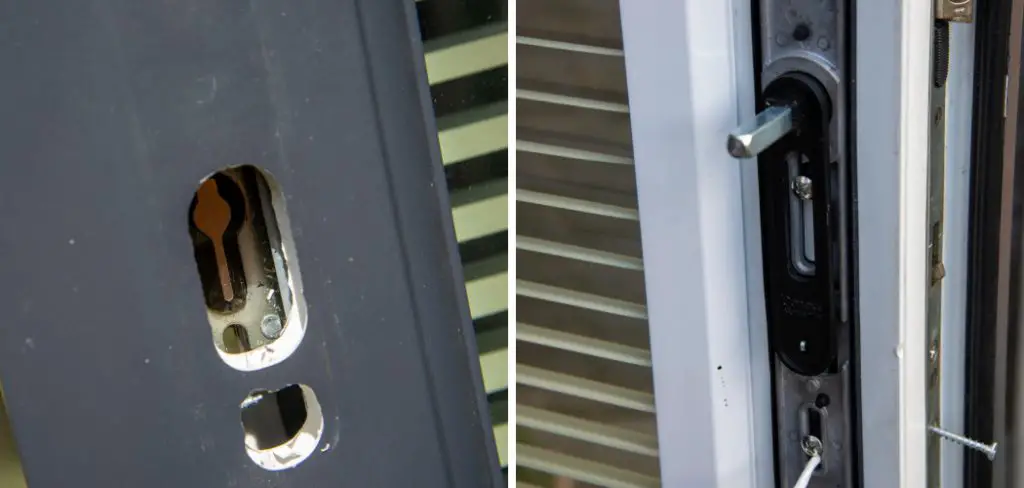
In this comprehensive guide, we’ll explore various methods and techniques for safely removing a stuck deadbolt, ranging from simple DIY solutions to more advanced repairs. Understanding the underlying causes of the deadlock and employing the appropriate tools and methods are crucial steps in successfully resolving the issue.
This article aims to provide a comprehensive guide on how to remove a stuck deadbolt. Whether you’re a homeowner, renter, or property manager, mastering the art of removing a stuck deadbolt is an essential skill that can save you time, money, and unnecessary stress. So, let’s delve into the steps and strategies involved in freeing a stuck deadbolt and regaining control over your home’s security.
Importance of Functional Deadbolts for Home Security
The significance of functional deadbolts in maintaining home security cannot be overstated. Deadbolts act as the first line of defense against unauthorized entry, providing a higher level of security than the standard doorknob locks.
They are designed to withstand external pressures, including attempts at forced entry, picking, or drilling, thereby significantly reducing the likelihood of break-ins. A properly functioning deadbolt lock extends beyond the mere physical barrier it provides; it also offers residents peace of mind, knowing their homes are secure.
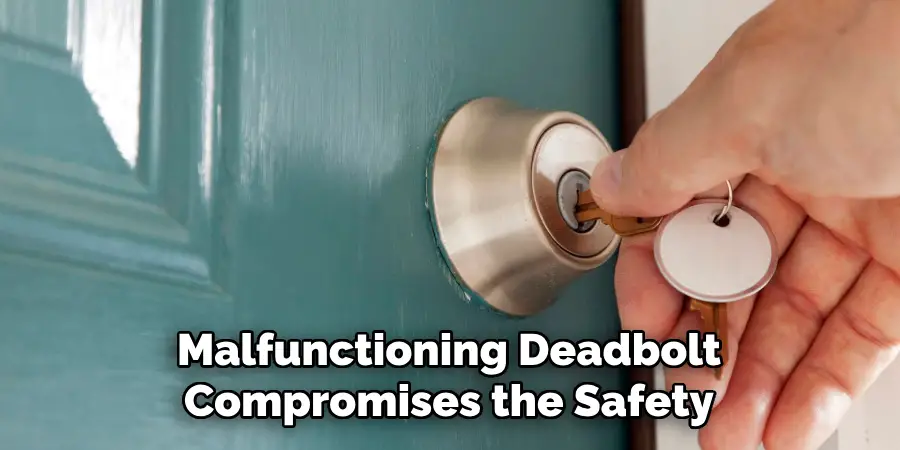
In contrast, a stuck or malfunctioning deadbolt compromises the safety of the property and its inhabitants, making it imperative to address any issues promptly. Ensuring your deadbolt is in optimal working condition is crucial for safeguarding your home against potential threats and maintaining overall security.
Understanding the Causes of a Stuck Deadbolt
Identifying the root causes of a stuck deadbolt is the first step towards finding an effective solution. There are several common factors that can contribute to this issue:
- Misalignment: Over time, the alignment between the door, the bolt, and the strike plate can shift due to reasons like house settling, temperature changes, or improper installation. This misalignment puts extra strain on the locking mechanism, making it difficult to turn.
- Dirt and Debris: Accumulation of dirt, dust, and other foreign particles within the lock cylinder can impair the movement of the key or the bolt, leading to a stuck deadbolt.
- Rust and Corrosion: Exposure to moisture and environmental elements can cause the metal components of the deadbolt to rust and corrode. This not only affects the integrity of the metal but also hinders the smooth operation of the lock.
- Wear and Tear: Repeated use over the years naturally wears down the internal components of the deadbolt, potentially resulting in a malfunctioning or stuck lock.
- Faulty or Damaged Components: Defective parts, whether from manufacturing flaws or damage from external forces (such as attempted break-ins), can also be a primary reason for a deadbolt being stuck.

Common Reasons for a Deadbolt Getting Stuck
A deadbolt may become stuck for numerous reasons, each attributing to either internal mechanisms failing or external factors affecting its functionality. Some of the most prevalent causes include:
- Lack of Lubrication: Over time, the internal components of a deadbolt lock, such as pins and springs, can become dry due to lack of proper lubrication. This results in increased friction and resistance when attempting to turn the key or engage the bolt.
- Improper Key Use: Using the wrong key, a bent key, or forcing the key in and out can damage both the key and the lock cylinder, leading to a stuck deadbolt. Regular wear and tear on keys can also result in a misfit that prevents the deadbolt from functioning correctly.
- Temperature Changes: Extreme temperature fluctuations can cause door materials (wood, metal) to expand or contract, affecting how the deadbolt fits into the frame or strike plate. This often results in misalignment and difficulty in operating the deadbolt.
- Over-tightening of Screws: The screws that hold the lockset in place can sometimes be over-tightened during installation or maintenance, distorting the lock’s internal mechanism and leading it to become stuck.
- Jamming due to Foreign Objects: In some cases, small objects or debris can get lodged inside the lock, obstructing the path of the bolt or keyway and making it difficult to move the deadbolt.
Importance of Functional Deadbolts for Home Security
Environmental factors play a pivotal role in the functionality and longevity of deadbolt locks. Extreme weather conditions, such as high humidity, rain, and temperature swings, can contribute significantly to the deterioration of deadbolt mechanisms. High humidity levels and prolonged exposure to water can accelerate the rusting and corrosion process, particularly in metal components.
This corrosion can compromise the structural integrity of the lock and negatively affect its operation. Similarly, dramatic temperature fluctuations can lead to the expansion and contraction of door materials and lock components, often causing misalignment issues that make it difficult to operate the deadbolt smoothly.
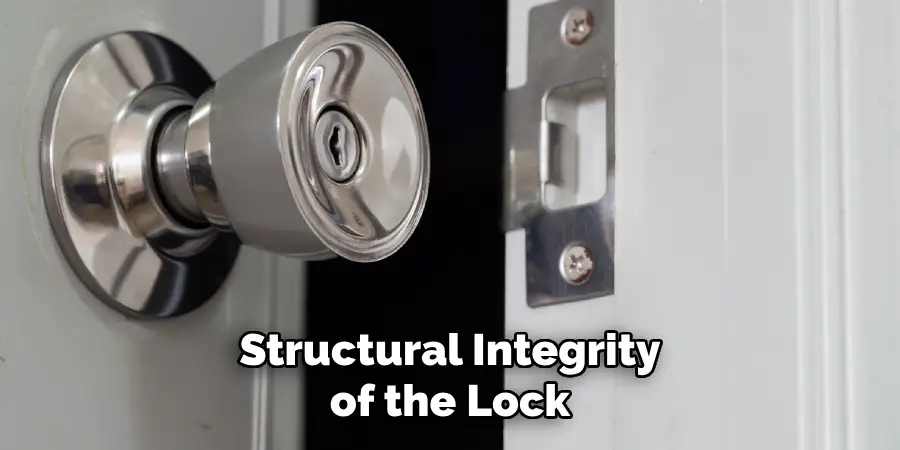
Furthermore, environmental debris, such as sand and salt from coastal areas, can infiltrate the lock mechanism, leading to abrasion and additional wear over time. Understanding the impact of these environmental factors is crucial for maintaining deadbolts in optimal condition, emphasizing the need for regular maintenance and protective measures to combat these external influences.
Importance of Diagnosing the Underlying Cause
Identifying the underlying cause of a stuck deadbolt is not merely about fixing a temporary inconvenience; it is a critical step in ensuring the continued security and functionality of one’s home. By pinpointing the exact reason behind a malfunctioning deadbolt, homeowners can implement a more effective and durable solution, rather than resorting to temporary fixes that do not address the root problem.
This proactive approach not only saves time and resources in the long run but also prevents the issue from escalating into a more serious security risk. Additionally, understanding the cause of the problem can help in implementing preventative measures to avoid similar issues in the future.
In essence, the diagnosis of the underlying cause is fundamental to maintaining the integrity of the lock’s security features and by extension, the safety of the property and its residents.
Identifying the Symptoms of a Stuck Deadbolt
To effectively troubleshoot and repair a stuck deadbolt, it is important to first recognize its common symptoms. Identifying these signs early can help address the issue before it worsens or compromises your home’s security. Common symptoms include:

- Difficulty in Turning the Key: If turning the key within the deadbolt feels unusually tight or requires excessive force, this is a clear sign that the deadbolt mechanism may be encountering resistance.
- Key Failing to Insert or Remove Smoothly: When the key does not slide in or out of the lock smoothly, it may indicate an obstruction or damage within the lock cylinder.
- Deadbolt Not Fully Extending or Retracting: If the deadbolt does not extend fully into the strike plate or retract completely into the door, this could point to misalignment or obstruction within the lock mechanism.
- Visible Signs of Damage or Wear: Any noticeable damage to the deadbolt itself, the key, or around the door frame area can suggest underlying issues contributing to the deadbolt being stuck.
- Unusual Noises When Operating the Deadbolt: Sounds such as grinding, clicking, or resistance noises when turning the key or engaging the deadbolt are symptomatic of a problem with the internal components.
Maintenance Tips for the Deadbolt and Surrounding Hardware
Proper maintenance of the deadbolt and surrounding hardware is essential for ensuring the longevity and functionality of your home’s security mechanisms. Regularly checking and caring for these components can prevent common issues like sticking or jamming. Here are some maintenance tips to keep your deadbolt and surrounding hardware in top condition:
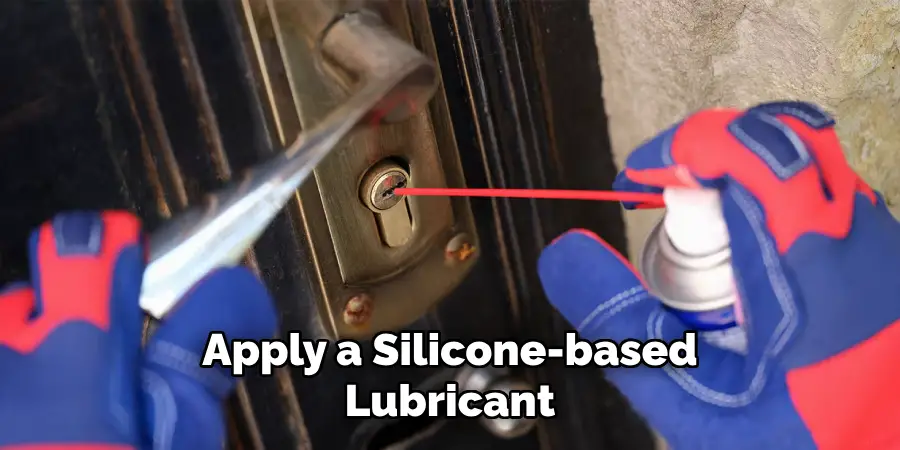
- Lubrication: Apply a silicone-based lubricant or graphite powder to the moving parts of the deadbolt at least once a year. Avoid using oil-based products as they can attract dirt and cause gummy deposits.
- Cleaning: Gently clean the deadbolt, keyway, and surrounding door hardware with a mild soap solution to remove dirt and grime build-up. Rinse with water and dry thoroughly.
- Tightening Screws: Periodically check the screws on the deadbolt and door hinges to ensure they are tight. Loose screws can lead to misalignment and improper functioning of the lock.
- Inspection for Wear and Damage: Regularly inspect the deadbolt, key, and door frame for signs of wear, damage, or corrosion. Replace any components that are no longer in good condition.
- Adjusting Strike Plate: If the deadbolt is not engaging smoothly with the strike plate, adjust the placement of the strike plate for a better fit. Sometimes, minor repositioning can significantly improve the lock’s performance.
- Protecting Against Environmental Damage: Apply a protective coating to the deadbolt and door hardware to guard against rust and corrosion, especially in areas with high moisture or salt exposure.
10 Methods How to Remove a Stuck Deadbolt
1. Check for Obstructions:
Begin by inspecting the area around the deadbolt to identify any obstructions that may be preventing it from retracting properly. Look for debris, dirt, or other foreign objects lodged in the lock mechanism or strike plate. Use a flashlight to illuminate the area and carefully remove any obstructions using tweezers, a toothpick, or a small screwdriver.
2. Lubricate the Deadbolt:
Apply a lubricant to the deadbolt mechanism to help loosen any corrosion or rust that may be causing it to stick. Use a graphite-based lubricant or silicone spray and apply it generously to the keyhole, bolt, and surrounding components. Work the key in and out of the lock several times to distribute the lubricant evenly and help free up the stuck deadbolt.
3. Tap the Deadbolt Gently:
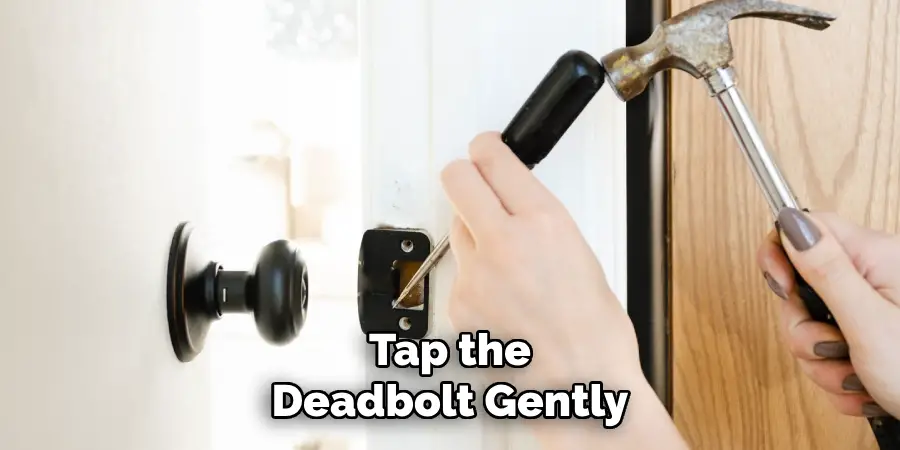
Use a hammer or mallet to tap the deadbolt gently while attempting to turn the key. Tap the bolt in the direction of its movement to help dislodge any debris or corrosion that may be causing it to stick. Be careful not to apply too much force, as this could damage the lock or door frame.
4. Apply Heat:
Use a hairdryer or heat gun to apply heat to the stuck deadbolt and surrounding area. Heat can help expand metal components and loosen any corrosion or rust that may be causing the deadlock. Hold the hairdryer or heat gun a few inches away from the lock and move it back and forth to distribute the heat evenly. Once heated, try turning the key again to retract the deadbolt.
5. Use a Deadbolt Removal Tool:
Deadbolt removal tools are specially designed devices that can help retract a stuck deadbolt without damaging the lock or door. Insert the removal tool into the keyhole and follow the manufacturer’s instructions for operation. These tools typically feature a hook or claw mechanism that grips the deadbolt and allows you to retract it manually.
6. Adjust the Strike Plate:
The strike plate is the metal plate attached to the door frame that the deadbolt extends into when locked. If the deadbolt is stuck due to misalignment with the strike plate, you may need to adjust the plate to allow the bolt to retract properly.
Loosen the screws securing the strike plate to the door frame and use a file or chisel to widen the hole slightly if necessary. Once adjusted, tighten the screws securely and test the deadbolt.
7. Try Different Keys:
If the deadbolt is stuck due to a worn or damaged key, try using a different key to see if the issue persists. Over time, keys can become worn or bent, causing them to no longer operate the lock properly. Using a different key may provide enough leverage to retract the deadbolt and unlock the door.
8. Apply Penetrating Oil:
Penetrating oil can help break down corrosion and rust that may be causing the deadbolt to stick. Apply a small amount of penetrating oil to the keyhole and allow it to penetrate the lock mechanism for several minutes. Once the oil has had time to work its way into the lock, attempt to turn the key again to retract the deadbolt.
9. Use a Screwdriver:
In some cases, you may be able to manually retract the deadbolt using a flat-head screwdriver. Insert the screwdriver into the keyhole and apply gentle pressure to the bolt while turning the key. Be careful not to apply too much force, as this could damage the lock or door. If the deadbolt still does not retract, consider seeking professional assistance.
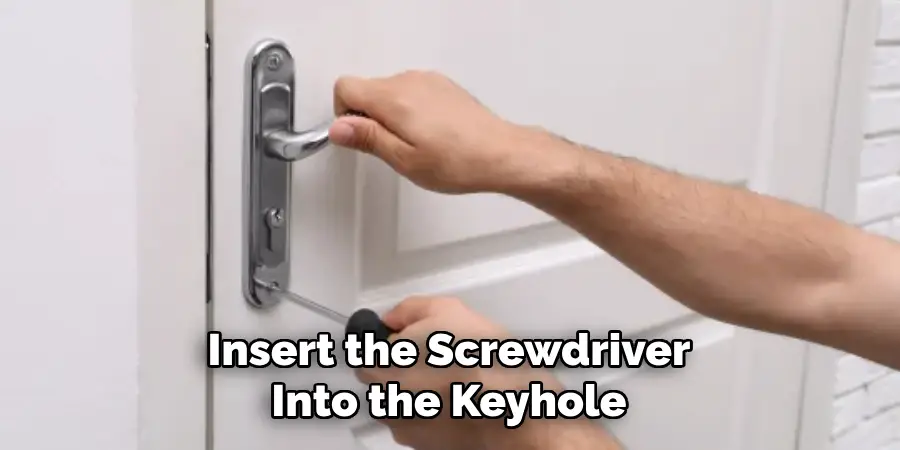
10. Call a Locksmith:
If you’ve exhausted all other options and the deadbolt remains stuck, it’s best to call a professional locksmith for assistance. Locksmiths have the knowledge, skills, and specialized tools required to diagnose and resolve a wide range of lock issues efficiently. A locksmith can assess the situation, determine the best course of action, and safely remove the stuck deadbolt without causing damage to the lock or door.
Common Mistakes to Avoid
When dealing with a stuck deadbolt, it’s crucial to avoid common mistakes that can lead to further damage, increased costs, or even security vulnerabilities. Here are some pitfalls to steer clear of:
- Using Excessive Force: One of the most common errors is applying too much force, either when turning the key or attempting to retract the deadbolt manually. This can break the key, damage the lock, or warp the door frame, compounding the problem.
- Neglecting Lubrication: Skipping the step of lubricating the lock can lead to increased friction and make the issue worse. Always use an appropriate lubricant to help ease the deadbolt’s movement.
- Ignoring Alignment Problems: Misalignment between the deadbolt and strike plate is often overlooked. Regularly check and adjust the alignment to prevent the bolt from becoming stuck.
- DIY Disassembly Without Knowledge: Attempting to disassemble and fix the lock without proper understanding can lead to mishandling and potential damage. If unsure, it’s better to consult with or hire a professional locksmith.
- Overlooking the Need for Maintenance: Failing to perform regular maintenance checks can lead to rust, corrosion, and accumulation of debris, all of which can cause the deadbolt to get stuck. Routine inspection and cleaning are necessary to ensure smooth operation.
By avoiding these common mistakes, you can extend the lifespan of your deadbolt, maintain its effectiveness, and ensure your home’s security is not compromised.
Conclusion
In conclusion, successfully removing a stuck deadbolt is crucial for maintaining home security and ensuring ease of access. By following the comprehensive methods outlined in this guide, you can address common issues such as misalignment, debris buildup, or worn components that may cause a deadbolt to become stuck.
Whether lubricating the mechanism, adjusting the strike plate, tapping the deadbolt with a hammer, or utilizing specialized removal tools, each method offers a solution to stubborn deadbolts.
If DIY methods prove ineffective, seeking professional assistance from a locksmith or door repair technician is advisable to prevent further damage and ensure the security of your home. Thanks for reading our blog post on how to remove a stuck deadbolt! We hope you found it helpful and informative.
You Can Also Check This Out to Protect Walls From Chair Damage

